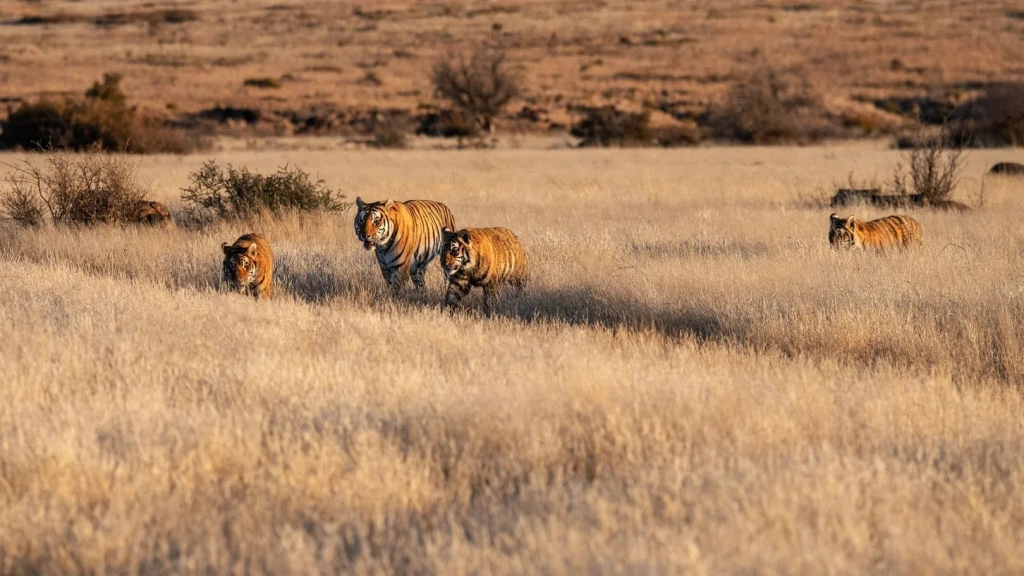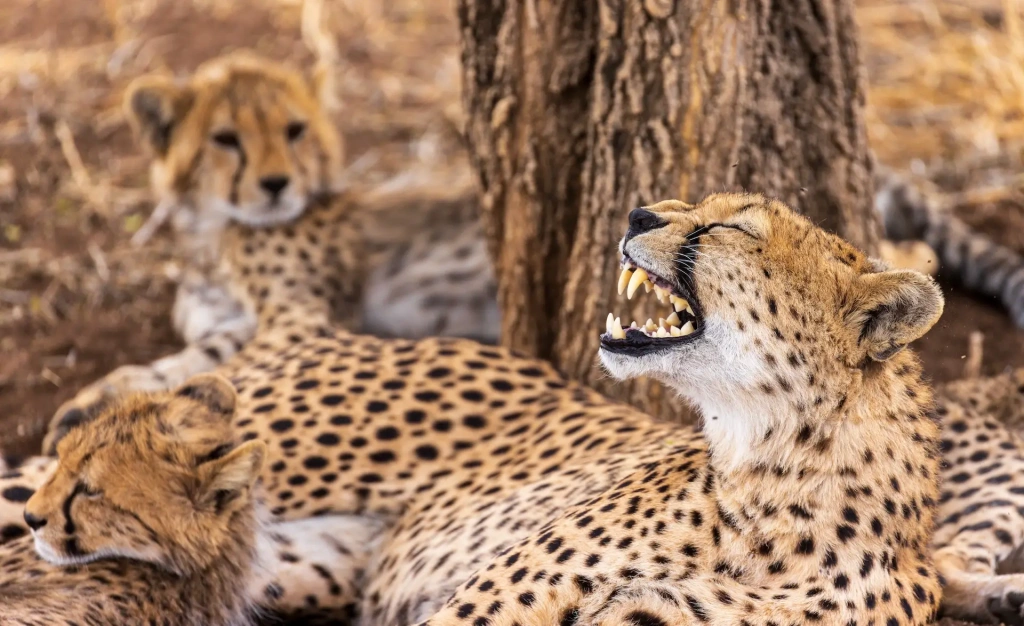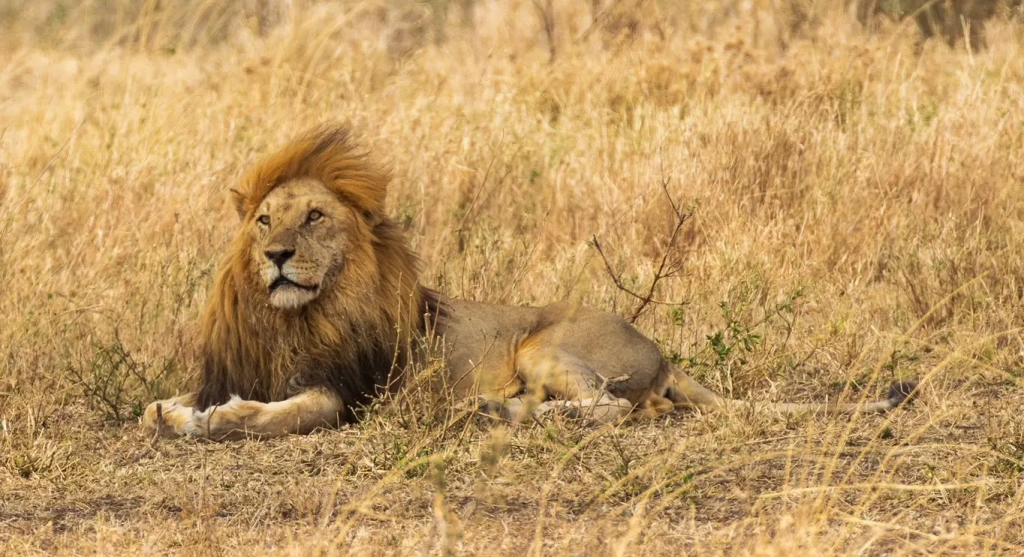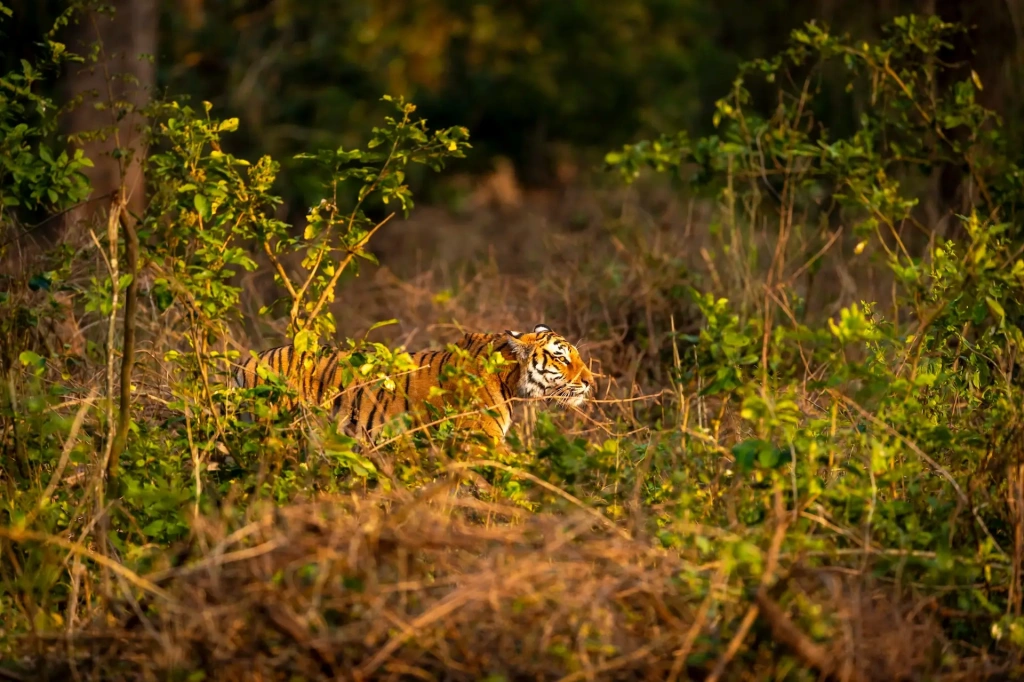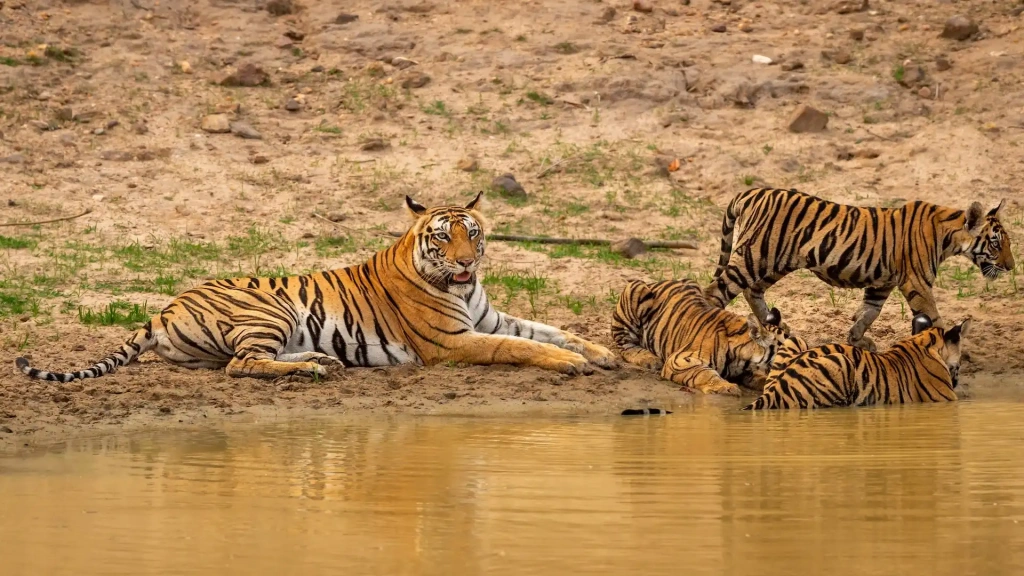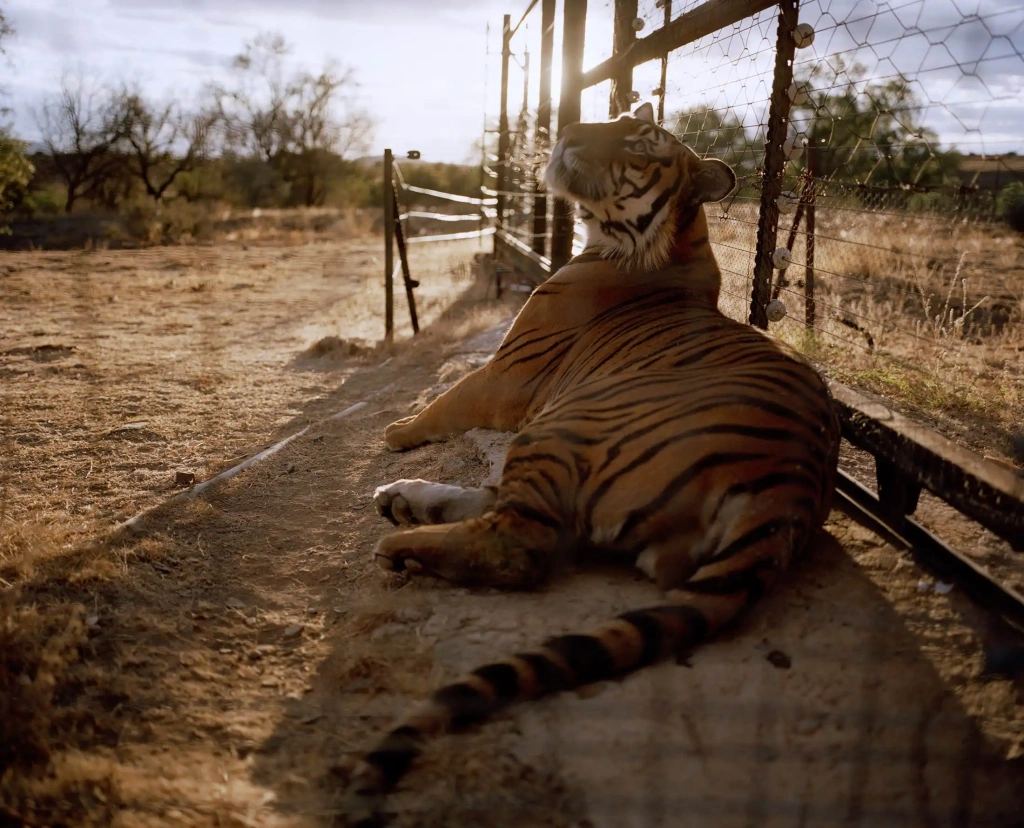The short answer is no — there are no wild tigers in Africa, and there never were. However, some private reserves and zoos, particularly in South Africa, house tigers for conservation and tourism purposes.
These tigers live in protected environments and are not part of Africa’s natural wildlife. In the wild, tigers are native to Asia, not Africa.
Why do many people think tigers roam freely in Africa?
It’s surprising how many people believe that if you go on an African safari, you’ll see lions, giraffes, elephants, and…tigers. Try a small experiment: ask a few friends which large predators can be seen on safari in Africa. You’ll likely find that some mention tigers. Even some safari-goers mistakenly believe that tigers roam Africa, confusing them with leopards or lions. Why does this happen? Do tigers live in Africa, after all?
The main reason for the mistake is that people often struggle to distinguish between . Leopards are easily confused with jaguars, and people may also lump in cheetahs, even though they belong to a different category of felines. The cougar (puma) is also a small cat, but if you show a layperson a picture of one, they might mistake it for a lioness. In general, people mix up the classifications of big cats, sometimes even calling lions "tigers."
Another issue is understanding the geography of big cats. Jaguars and cougars live in South and North America, lions are found in Africa and parts of India, and tigers are exclusively in Asia. This confusion leads people to believe that, since Africa is so rich in wildlife, tigers must also roam its savannas. But why aren’t they there?
Why don’t tigers live in Africa?
Tigers as a species originated in Asia about 2 million years ago during the Pleistocene epoch, also known as the Ice Age. The evolutionary history of felines is complex and full of missing links. For a long time, it was believed that all big cats descended from a common African ancestor. However, DNA research and discoveries of extinct species suggest that big cats first appeared in Asia nearly 6 million years ago.
This explains why tigers are only found in Asia — they were never native to Africa. Interestingly, research also indicates that the ancestors of African lions and leopards were originally from Asia as well.
But if lions made it to Africa, what prevented tigers from doing the same? Scientists don’t have a single answer. This puzzle is typically explained by a combination of evolutionary, ecological, and geographical factors.
Evolutionary factors
Tigers evolved to thrive in the dense landscapes of central and southeast Asia, where thick vegetation provides cover for ambush hunting. Their black stripes on an orange-white body serve as perfect camouflage in forests, giving them an advantage while hunting.
However, Africa consists largely of open landscapes. In the savanna, tigers would struggle to hunt because their large size and distinctive markings would make them too visible.
Tigers are also the largest cats, capable of hunting not just boars and deer but even moose, wild cattle, and buffalo in Asia. The abundance of prey meant they never needed to migrate long distances. But in Africa, their size would be a disadvantage — speed and endurance matter more in the savanna, whereas a large body limits mobility.
Another drawback: tigers don’t climb trees. In Africa, they’d struggle to escape the sun and protect their prey from hyenas, which are adept at stealing food.
Furthermore, tigers are solitary hunters, unlike lions, which hunt in groups. Evolution prepared modern tigers for humid forests, bamboo thickets, and mangrove swamps — environments that don’t exist on the African plains.
Ecological factors
From an ecosystem perspective, tigers would be redundant in Africa. They occupy the same predatory niche as lions, leopards, and hyenas. Since this niche is already filled, tigers would struggle to compete for territory and food. African predators that are more adapted would not allow them to establish a stable population.
Geographical barriers
Even reaching Africa from Asia would be a challenging task for tigers. There are natural obstacles along the way: high mountain ranges, vast deserts like the Sahara, and other natural barriers. These were even harder to overcome in the past, when the Ice Age made the climate much harsher than it is today. What the ancestors of lions and leopards managed to overcome proved too difficult for the ancestors of tigers.
And why bother overcoming all these difficulties if the territories of Central and Northern Asia were already perfectly suited for tigers? There was minimal competition, so all tigers needed to do to survive and reproduce was to increase body mass, refine their natural camouflage, and hone their specialized hunting skills — meaning their ability to remain still for long periods in ambush, silently creeping up on prey and executing a swift, powerful final charge.
Yet, despite these evolutionary advantages, these majestic creatures are now facing extinction.
How many tigers are left in the world?
Tigers are rapidly disappearing due to habitat destruction and human activities, including poaching and trophy hunting. It is estimated that in the 19th century, there were around 100,000 tigers in the wild. Today, there are only about 3,000–4,000 wild tigers left. In the best-case scenario, their population has declined 25-fold. Three tiger subspecies became completely extinct in the 20th century.
Which countries have tigers?
Currently, tigers are believed to inhabit 14 countries: India, China, Nepal, Bhutan, Bangladesh, Vietnam, Laos, Cambodia, Thailand, Malaysia, Russia, Indonesia, Myanmar, and North Korea.
However, the status of the North Korean population is uncertain. Also, there are doubts about the presence of tigers in some of the other listed countries. It is estimated tigers occupy only about 5-6% of their historic range.
Governments of these nations are concerned about protecting the remaining fragmented populations. Various conservation programs are in place to combat poaching and increase tiger numbers. However, despite these efforts, the overall number of wild tigers continues to decline.


Efforts to protect and restore tiger populations are not limited to the countries where they historically lived. Even some countries far from the tigers’ natural habitat are involved in conservation efforts — including one in Africa: South Africa.
Where can I see tigers in Africa? (in captivity)
In South Africa, there are several private tiger reserves and so-called tiger breeding farms. These projects have faced some criticism from experts. Some have even been involved in public scandals. The officially stated purpose of such projects is to breed tigers in a secure environment so they can later be released into their natural habitats in Asia — or simply to help preserve the species since countries like China have struggled to do so.
The most well-known of these projects is the Laohu Valley Reserve, which was established to house the highly endangered South China tiger. The individuals transferred there were born in captivity in China and were among the last known representatives of their subspecies. Once relocated to South Africa, they began reproducing. These tigers live in conditions that closely mimic their natural habitat, and the goal is to teach them how to survive in the wild.
However, the problem with such projects is that, in reality, the owners of these "African" tigers often use them for commercial purposes — charging tourists to see them or selling them to zoos. The worst-case scenario involves illegal trade of captive-bred tigers or even their body parts to Asian markets. Just as with rhinos, there is demand for tigers in traditional Chinese medicine, where their bones, teeth, and claws are used as painkillers and aphrodisiacs.
Additionally, there are private zoos and tourist attractions in Africa that keep tigers in captivity. In most of them, visitors are offered the chance to see wild animals up close and take photos with them. In some cases, people can even interact with trained tigers.
For example, on Zanzibar (Tanzania), there is an interactive zoo called Cheetah’s Rock, which promotes itself in marketing materials as a wildlife rescue center. It keeps a Bengal tiger in a cage, yet neither Cheetah’s Rock nor similar tourist attractions have anything to do with actual tiger conservation.
Would tigers survive in Africa if introduced?
As discussed earlier, tigers would not survive in the wild in Africa, even if they were introduced there. The reasons are the same ones that prevented both modern tigers and their ancestors from ever migrating to Africa in the first place:
- The ecosystems of Africa and Asia are too different
- There is high competition among large carnivores in Africa
It is highly unlikely that lions and tigers could coexist in the same territory.
All content on Altezza Travel is created with expert insights and thorough research, in line with our Editorial Policy.

Want to know more about Tanzania adventures?
Get in touch with our team! We've explored all the top destinations across Tanzania. Our Kilimanjaro-based adventure consultants are ready to share tips and help you plan your unforgettable journey.















